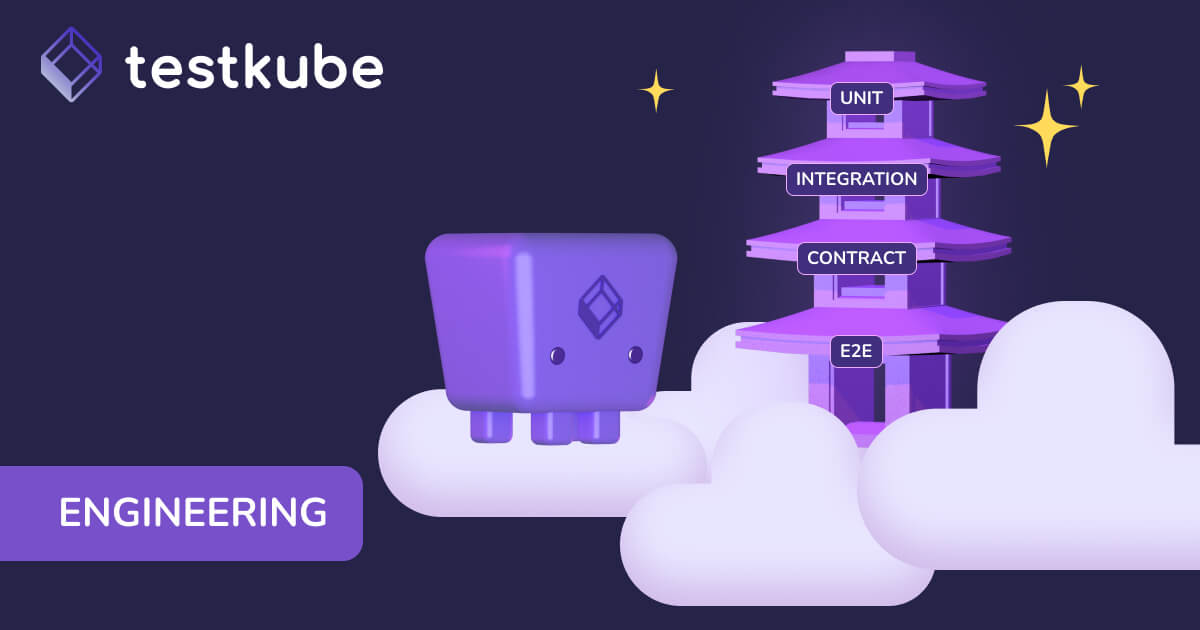

Table of Contents
Try Testkube instantly in our sandbox. No setup needed.
Try Testkube instantly in our sandbox. No setup needed.




Table of Contents
Executive Summary
What is Kubernetes Load Testing?
Kubernetes load testing is the critical process of evaluating how containerized applications perform under various traffic loads within a Kubernetes cluster. As organizations increasingly adopt Kubernetes to manage containerized workloads, load testing in K8s environments presents unique challenges that require specialized approaches and tools.
Load testing ensures your applications can handle production traffic while maintaining optimal performance, proper resource utilization, and cost-effectiveness in your Kubernetes infrastructure.
Best Practices for Load Testing in Kubernetes
1. Start Small and Scale Up Gradually
Begin with small-scale tests to identify issues before running large-scale load tests. This progressive approach helps you:
- Establish performance baselines with 10-50 concurrent users
- Identify configuration problems early in the testing cycle
- Validate auto-scaling behavior at different traffic levels
- Optimize resource allocation before peak load testing
Use real-world scenarios to simulate actual user behavior and network conditions. Creating realistic test scenarios includes:
- Mimicking authentic user journeys and interaction patterns
- Incorporating realistic think times between user actions
- Simulating variable network latency and bandwidth conditions
- Testing different device types and geographic locations
2. Monitor Kubernetes Infrastructure Metrics
Track comprehensive infrastructure metrics during load testing to identify performance bottlenecks:
Essential Kubernetes Metrics:
- CPU and memory usage per pod and node
- Network traffic and I/O throughput
- Pod scaling events and HPA behavior
- Resource quota utilization
- Storage I/O performance
- Container restart frequency
Monitoring these metrics helps optimize resource requests, limits, and auto-scaling configurations for better performance and cost efficiency.
3. Use Kubernetes-Native Load Testing Tools
Leverage specialized tools designed to work seamlessly with Kubernetes environments. The best K8s load testing tools offer:
- Native Kubernetes integration and operators
- Distributed testing capabilities across multiple pods
- Real-time metrics collection and monitoring
- CI/CD pipeline integration for automated testing
- Support for complex containerized architectures
Top Load Testing Tools for Kubernetes
1. K6 - Modern Load Testing for Cloud-Native Applications
K6 is the leading open-source load testing tool designed specifically for modern architectures like Kubernetes.
Key K6 Features:
- JavaScript-based scripting language for easy test creation
- Built-in Kubernetes operator for native cluster integration
- Distributed load testing across multiple pods
- Real-time performance metrics and monitoring
- Excellent CI/CD integration capabilities
Getting Started: Read our comprehensive k6 Kubernetes tutorial to implement load testing with k6 and Testkube.
2. Gatling - Enterprise-Grade Performance Testing
Gatling is a powerful open-source load testing tool offering advanced features for Kubernetes environments.
Gatling Advantages:
- User-friendly web interface for test management
- Real-time performance monitoring and detailed reporting
- High-performance test execution engine
- Seamless Kubernetes integration via official plugins
- Scala-based DSL for complex test scenarios
3. Locust - Python-Based Distributed Load Testing
Locust provides an intuitive, Python-based approach to distributed load testing in Kubernetes.
Locust Benefits:
- Simple and intuitive Python scripting interface
- Web-based UI for real-time test monitoring
- Excellent support for distributed testing architectures
- Easy Kubernetes deployment using official Helm charts
- Flexible load pattern configuration
Here's How Testkube Simplifies Kubernetes Load Testing
Testkube is a comprehensive cloud-native testing solution designed to streamline the entire testing process in Kubernetes environments. It supports any testing tool including k6, Gatling, and custom load testing solutions.
Key Testkube Benefits for K8s Load Testing:
1. Enhanced Scalability
Testkube leverages Kubernetes' native scalability features to enable parallel test execution, dramatically reducing the time required to run comprehensive test suites. This distributed approach can reduce testing time by up to 75% compared to traditional sequential testing.
2. Streamlined Automation
Managing testing tools like k6, Gatling, and Locust in Kubernetes can be complex and time-consuming. Testkube provides:
- Built-in automation capabilities for seamless CI/CD integration
- Pre-configured deployment templates for popular testing tools
- Automated test scheduling and execution workflows
- Elimination of manual intervention in testing processes
This automation significantly reduces the complexity of implementing effective CI/CD testing workflows.
3. Consolidated Test Results and Analysis
Testkube consolidates test results from multiple sources, creating a unified view of your testing outcomes:
- Centralized dashboard for all load testing results
- Cross-tool performance comparison and analysis
- Historical trend analysis for performance regression detection
- Streamlined identification of bottlenecks and improvement areas
- Custom alerting and notification systems
Conclusion: Mastering Kubernetes Load Testing
Load testing in Kubernetes presents unique challenges, but with the right combination of tools and best practices, organizations can effectively ensure their containerized applications perform optimally under various load conditions.
Key Takeaways:
- Start small and scale gradually to identify issues early
- Monitor comprehensive infrastructure metrics for bottleneck identification
- Use Kubernetes-native tools like k6, Gatling, and Locust
- Leverage cloud-native platforms like Testkube for automation and scalability
- Implement continuous load testing in your CI/CD pipelines
By implementing these strategies and leveraging modern load testing tools, organizations can maintain high-quality software performance while optimizing resource utilization and costs in their Kubernetes environments.
Have questions? Join our Slack community for expert guidance, or submit feature requests on our GitHub Issues page.


About Testkube
Testkube is a cloud-native continuous testing platform for Kubernetes. It runs tests directly in your clusters, works with any CI/CD system, and supports every testing tool your team uses. By removing CI/CD bottlenecks, Testkube helps teams ship faster with confidence.
Explore the sandbox to see Testkube in action.


.avif)


